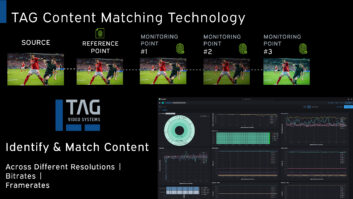
By Andy Salo, VP, product management, RGB Networks
The broadcast world has been a late convert to cloud computing, but the benefits are especially timely for an industry that embraces the concept of ‘TV Everywhere’ at its very core. Indeed, research has shown us time and time again that the viewing share of streamed or downloaded internet video is now greater than both video on-demand (VoD) and premium channels – like HBO – combined. As networks are being swamped with video traffic, a major challenge facing industry players is how to service these unprecedented levels of demand. On top of this, any dip in service quality, latency or customer experience creates the perfect conditions for subscriber churn, and thus revenue loss.
Need for efficiency
Unsurprisingly, this shift in consumer behaviour away from the traditional set-top box (STB) towards more personalised OTT consumption of video content has started to exert considerable pressure on the capabilities of existing service provider infrastructure. And, faced with an ever expanding ecosystem of mobile devices, each with their own streaming protocol, the costs of simply sustaining legacy pay TV operations on traditional headend systems as programme licensing and broadcast retransmission fees skyrocket are becoming untenable. As such, unable to invest further in costly, commodity hardware, today’s video service providers (VSPs) are at a point where a much more efficient approach to delivering and monetising services must be found.
Consequently, the promise of virtualising headend operations in the cloud has emerged as a viable solution. Thanks to an outpouring of cloud-based and software-defined networking solutions in recent months, VSPs can implement software in private and/or public hosted cloud environments that treat the network as a logical entity for delivering whatever services and applications are desired. Furthermore, done at low cost and with minimum fuss, it does so without sacrificing the quality and management controls that operators are accustomed to.
Reducing operating costs is not the only way that cloud streaming could prove financially advantageous. With the consolidation of all pay TV operations onto an IP services platform, operators will be able to capitalise on various modes of monetisation as opportunities arise. For many operators, nDVR and hyper-targeted advertising will become increasingly important as a means to generate revenue. Fortunately, it is the inherent scalability and responsive capabilities of cloud infrastructure that makes it so well-suited to delivering such a personalised offering; bandwidth and storage capacity can be scaled rapidly up or down according to demand. If applied to traditional infrastructure, the necessary operating expenditure would make this approach impossible.
A brave new, cloud-based world
Preparing to transition effectively to this brave, new, cloud-based world can be daunting and requires new practices that differ significantly from operators’ current approach to satisfying consumer demand for multiscreen access. As such, staying agile amidst these changes is critical for players in the market. By looking to solutions built on an open standard platform, VSPs can avoid the risk of becoming locked into proprietary technologies and gain access to a community of developers constantly working to improve the ecosystem as a whole. At the end of the day, hypervisors, deployment tools, and hardware options require many decisions and good guidance is key. Of course, it is important to note here that while many of the sub-components in the video transcoding ecosystem are already open source, there is still some way to go before it is the industry norm.
Though it will still be a long time before pure OTT services like Netflix will somehow supplant cable TV, the pressure to implement new features, while still delivering a greater range of content to an ever multiplying number of screens, will only continue to grow. Ultimately, the shift to software will empower operators not only to streamline the multiscreen distribution of their premium content, but also enable them to cost effectively capitalise on the capabilities of IP technology to deliver more compelling versions of their services with new features.







